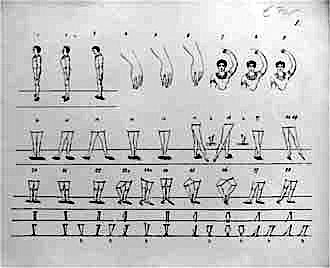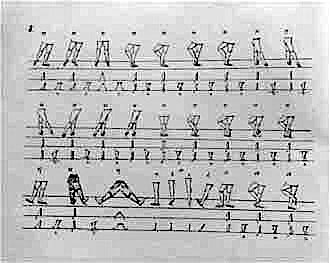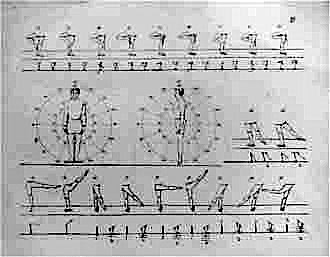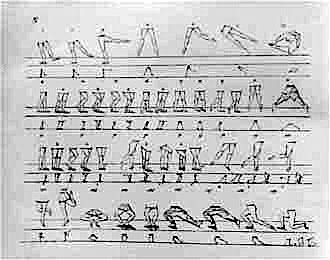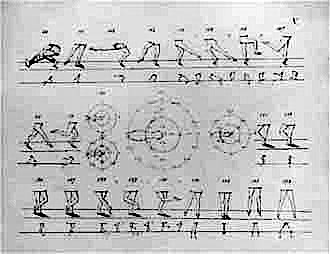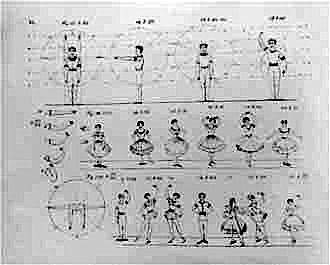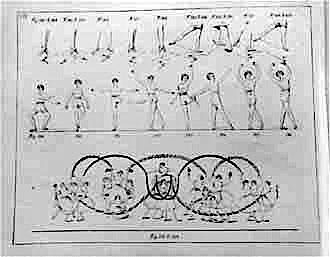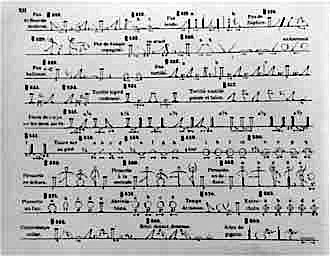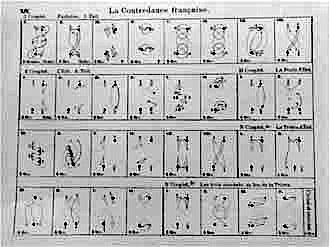The Art of Dancing in 1910 and Narratives of Time and Space
Published on August 28, 2007 (↻ December 13, 2022), filed under Design (RSS feed for all categories).
It’s interesting to explore different forms of data visualization. Here are some photos I took from a dance book from 1910, “Atlas zur Grammatik der Tanzkunst und Tanzschreibekunst oder Choreographie”—“Grammar of the Art of Dancing”—, by Friedrich Albert Zorn. Zorn was a successful German dancer, choreographer, and dance theorist who lived from 1820 to 1905.
Although the photographs are of rather poor quality, you should be able to make out interesting details (typography) and recognize what Edward Tufte taught as small multiples and “narratives of time and space.” The dance notation—which as far as I know is still in use?—invites to compare and assess changes. There probably are more things to note (and maybe to criticize) from an information design point of view, but take a look for yourself.
About Me

I’m Jens (long: Jens Oliver Meiert), and I’m a web developer, manager, and author. I’ve worked as a technical lead and engineering manager for small and large enterprises, I’m an occasional contributor to web standards (like HTML, CSS, WCAG), and I write and review books for O’Reilly and Frontend Dogma.
I love trying things, not only in web development and engineering management, but also in other areas like philosophy. Here on meiert.com I share some of my experiences and views. (I value you being critical, interpreting charitably, and giving feedback.)
Read More
Maybe of interest to you, too:
- Next: 7 Additional Ways to Focus on Users
- Previous: Are You a Web Designer or a Web Decorator?
- More under Design
- More from 2007
- Most popular posts
Looking for a way to comment? Comments have been disabled, unfortunately.

Get a good look at web development? Try WebGlossary.info—and The Web Development Glossary 3K. With explanations and definitions for thousands of terms of web development, web design, and related fields, building on Wikipedia as well as MDN Web Docs. Available at Apple Books, Kobo, Google Play Books, and Leanpub.


